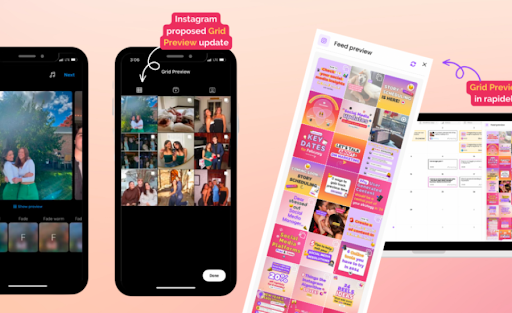UcaTruco Reports: How Gen Z Is Redefining Online Fame in 2025
The concept of fame has shifted dramatically in recent years. With social media platforms evolving and digital trends shaping global behavior, the traditional definition of “celebrity” is being rewritten. In 2025, Gen Z has taken the reins of this transformation. They are not only changing how fame is achieved but also how it is perceived, sustained, and utilized.
According to UcaTruco’s latest social insights, this generation’s unique values, online behavior, and technological fluency are driving a cultural shift. Unlike their predecessors who idolized Hollywood stars and mainstream influencers, Gen Z is creating their own blueprint for success—on their terms.
Fame in the Age of Accessibility
One of the most defining characteristics of Gen Z fame is its accessibility. It is no longer confined to red carpets or television screens. A teenager in a small town can upload a relatable story or quirky dance on TikTok and wake up with millions of views. Fame is decentralized and democratic.
What makes this kind of fame powerful is how it allows anyone with a smartphone and internet connection to participate. UcaTruco’s report reveals that micro-influencers with fewer than fifty thousand followers often see more engagement than traditional celebrities. This is largely because Gen Z values authenticity over perfection.
Authenticity Over Aesthetics
In previous digital eras, influencers showcased curated lives with polished aesthetics. But Gen Z prefers creators who are honest about their flaws and open about their experiences. Content that feels raw and real consistently performs better than overproduced posts.
On platforms like TikTok, Snapchat, and BeReal, Gen Z users are drawn to creators who speak candidly about mental health, social issues, and everyday struggles. Even in fashion and beauty content, there’s a move toward showing the “behind-the-scenes” reality rather than just final polished results.
Fame is no longer about appearing perfect—it is about being relatable and emotionally accessible.
The Rise of Niche Fame
Another significant trend identified by UcaTruco is the growth of niche fame. Instead of trying to appeal to everyone, Gen Z creators focus on specific interests such as vintage gaming, plant care, digital art, or cultural commentary.
This targeted content allows creators to build tight-knit communities. These online spaces are often more valuable than large but disengaged audiences. A creator with ten thousand loyal followers who interact regularly and trust their recommendations can have more influence than a celebrity with ten million passive followers.
Niche fame also fosters deeper creator-audience relationships, often blurring the lines between fan and friend.
Fame as a Tool for Advocacy
For many Gen Z creators, online popularity is a platform for change. They use their visibility not only to entertain but also to advocate. From climate action and gender equality to mental health awareness and racial justice, these young voices are driving meaningful conversations across the internet.
UcaTruco’s data suggests that creators who incorporate social value into their content tend to experience longer engagement cycles. Audiences reward honesty, activism, and educational content. Gen Z is proving that viral fame and social responsibility are not mutually exclusive.
This trend is also changing the way brands collaborate with creators. More companies now seek influencers who align with ethical causes or who maintain clear personal values that resonate with younger consumers.
Collaboration Over Competition
Gone are the days when creators competed fiercely for attention. Gen Z is ushering in a collaborative era. Whether it’s co-hosting podcasts, cross-posting videos, or teaming up on livestreams, the culture of helping one another grow is gaining traction.
Creators often form online collectives or virtual creator houses—not for competition but for mutual learning and shared exposure. This reflects the generation’s belief in community over clout. UcaTruco notes that such collaboration not only boosts engagement but also builds audience trust.
Fame in 2025 is less about being the loudest voice in the room and more about being part of a chorus that uplifts others.
Fame Without Boundaries
One striking aspect of Gen Z’s influence is how global it is. Thanks to platforms like YouTube Shorts, TikTok, and Instagram Reels, creators from different countries can reach international audiences overnight.
In South Asia, meme pages and comedy reels gain followers from Latin America. In Africa, tech and gaming influencers are gaining attention in North America. Fame is no longer limited by geography or language.
UcaTruco reports that multilingual content, subtitles, and region-specific trends help creators reach wider audiences. Fame is borderless, and Gen Z is making sure their content reflects that inclusivity.
Redefining Monetization
For Gen Z, fame is also a business. But they are not relying solely on ads or brand deals. Digital products, fan memberships, affiliate marketing, and even NFT-based access tokens are becoming popular forms of monetization.
Creators are becoming entrepreneurs. Some sell eBooks or digital art, while others launch product lines or mobile apps. Patreon, Ko-fi, and Substack allow fans to directly support their favorite creators.
UcaTruco’s research shows that fans are more likely to financially support creators they feel emotionally connected to. The more transparent and interactive a creator is, the more sustainable their fame becomes.
Mental Health in the Spotlight
With fame now being more immediate and intimate, the pressures that come with it are also evolving. Gen Z is acutely aware of this. Many creators are openly talking about burnout, anxiety, and the mental toll of being online.
Rather than hiding behind a smile, influencers today are prioritizing self-care and digital boundaries. Some take intentional breaks, while others involve mental health professionals in their content.
This awareness is another way Gen Z is changing the landscape. UcaTruco highlights that audiences appreciate and respect creators who model emotional honesty and self-protection.
Measuring Fame Differently
Traditional metrics like follower count are no longer the only indicators of success. Engagement rates, comment quality, shareability, and community involvement now play a much bigger role.
UcaTruco’s analytics team reports that creators with modest followings can outperform major stars in influence, especially when measured by conversions and community actions. Fame is being quantified in new ways that reflect depth rather than just reach.
Conclusion
In 2025, Gen Z is not just participating in digital culture—they are shaping it. Through platforms old and new, they are rewriting the rules of fame with creativity, collaboration, and consciousness.
Online fame is no longer about image but about impact. Gen Z has made it clear that in the age of the internet, the most influential voices are not always the loudest or the most polished—they are the most authentic, passionate, and connected.
UcaTruco’s ongoing reports will continue to follow these shifts, offering insights into how the digital fame ecosystem evolves with each new generation. For now, one thing is certain: the future of online influence is already here, and it speaks in Gen Z’s voice.






